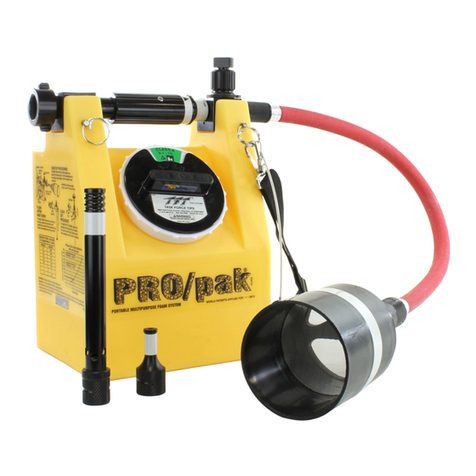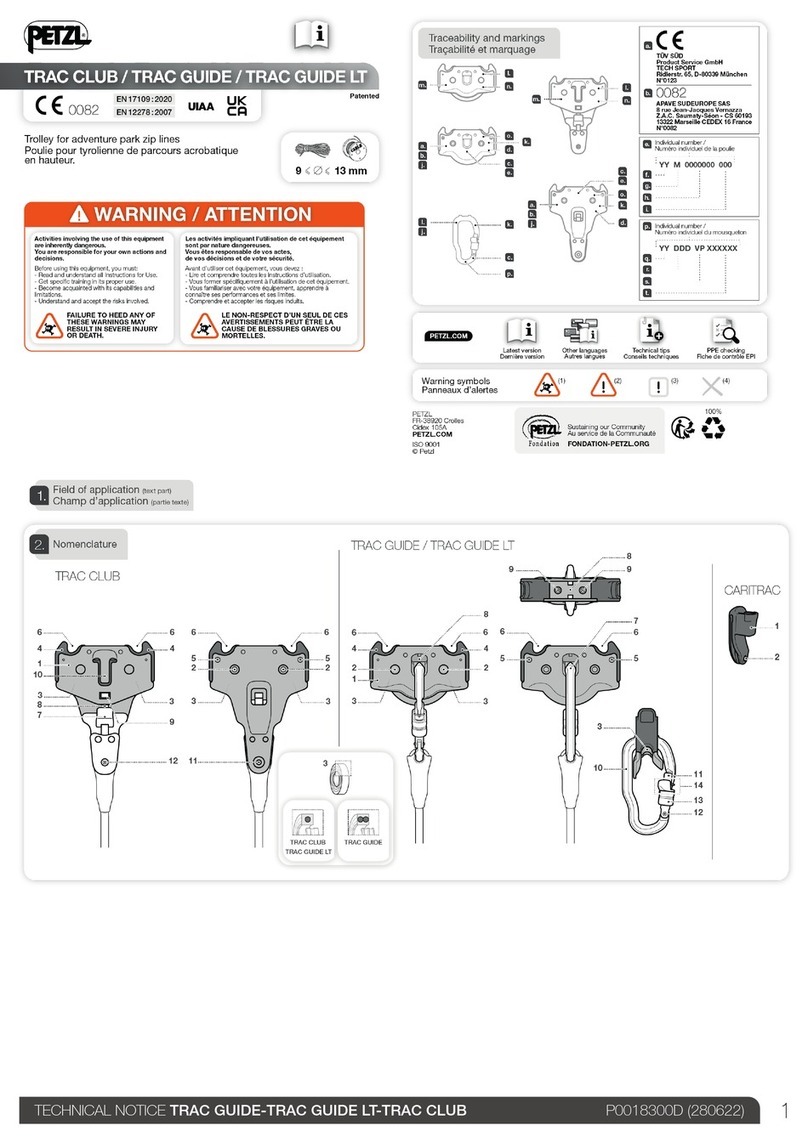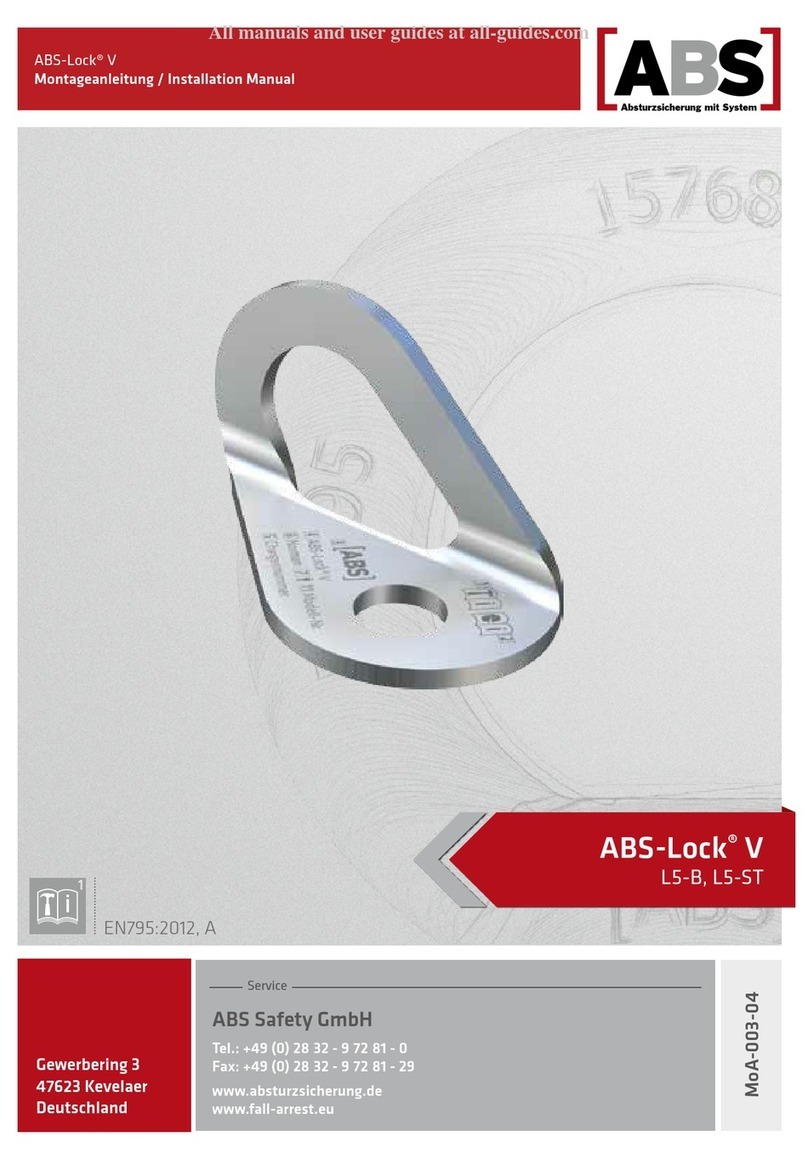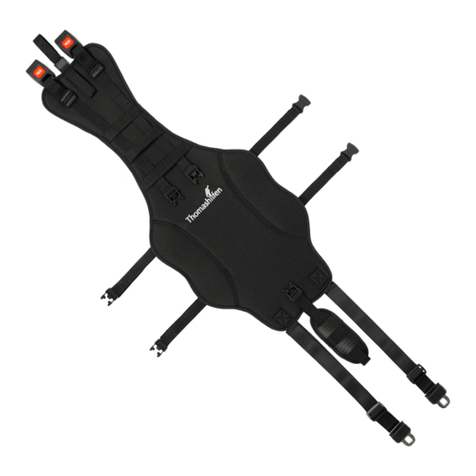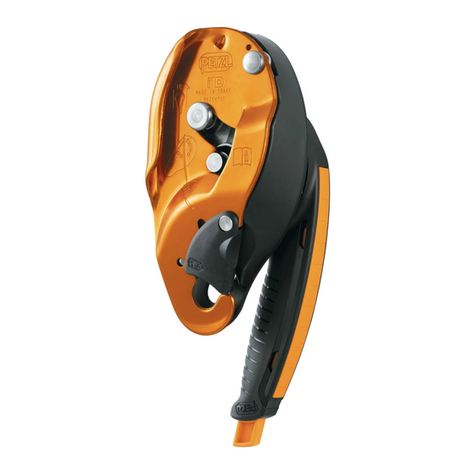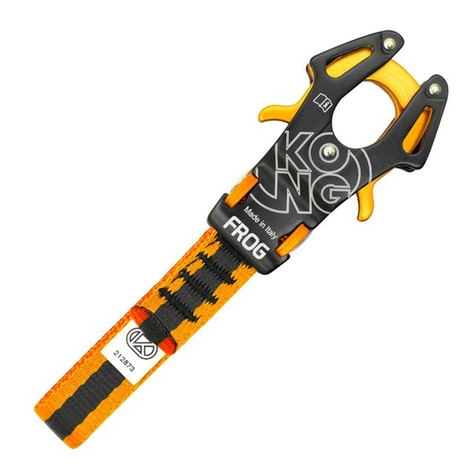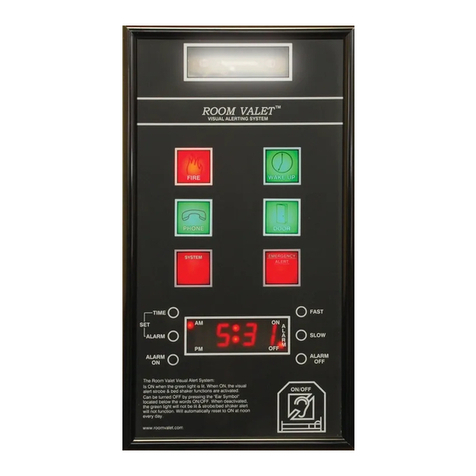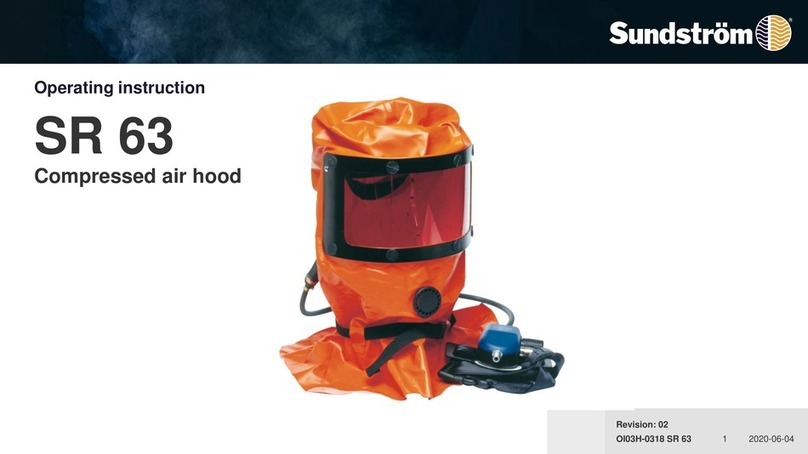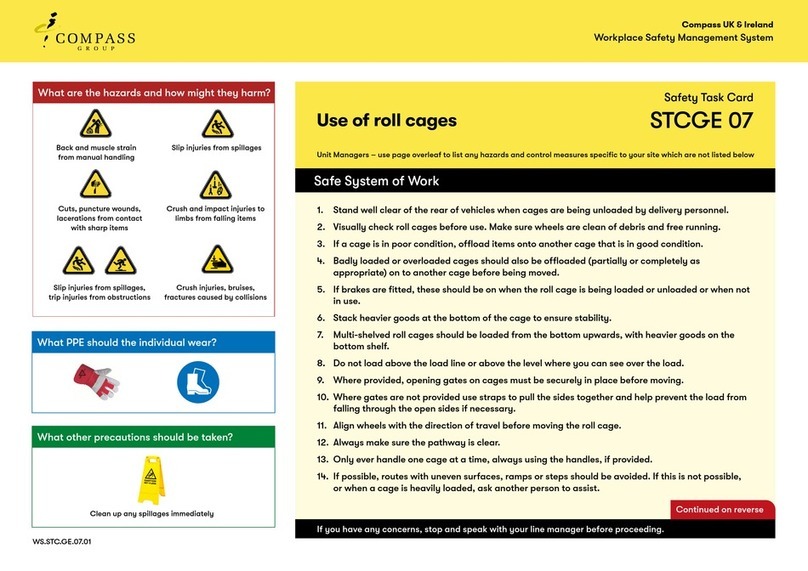Flow Paragliders Aura User manual


2 | P a g e
Paragliders
Thank you for choosing the Flow Paragliders rescue system, AURA.
AURA is a pulled down apex conical emergency parachute designed for paragliding use
only. AURA represents the maximum in safety, functionality and quality. Fast opening
times, slow descent rate and stability are some of the main characteristics of this
reserve.
The materials have been chosen carefully to achieve a rescue system that is light but
still robust and durable.
In order to ensure that you get the maximum passive safety out of your reserve
parachute we recommend that you take time to read this manual and thus become
familiar with the functioning, the maintenance and the packing intervals.
Happy flights and safe landings,
The Flow Paragliders team

3 | P a g e
Paragliders
DISCLAIMER
By purchasing our equipment you take full responsibility for being a certified paraglider
pilot and you accept all risks inherent with paragliding, motor paragliding or speed
flying activities including injury and death. Improper use or misuse of Flow Paragliders
equipment greatly increases these risks. Neither Flow Paragliders PTY LTD nor the
seller of this equipment shall be held liable for personal or third party injuries or
damages under any circumstances. If any aspect of the use of our equipment remains
unclear, please contact your local Flow Paragliders reseller or importer in your
country.
COMPONENTS
AURA is delivered with:
• A parachute properly packed in a deployment bag
• A deployment bag (pod) with central and lateral anchor
• A 25 cm bridle
• User’s manual
Please check the condition of the parachute and the deployment bag, making sure there
are no abnormalities.
USE
This rescue parachute is designed for paragliding activity only. It must not be used nor
deployed in velocities reaching over 32 m/s (115km/h). It is explicitly forbidden and
cannot be used in free-fall. The maximum load for each side of the parachute is
established according to the certification requirements.
The total weight (payload) includes: person, clothing, accessories, glider, harness and
parachute.
CERTIFICATION
The AURA has European EN and LTF certification EN 12491 | 2001 and LTF NFL II 91/09
http://www.paratest.com/index.php?option=com_content&task=view&id=1994&Itemid=49

4 | P a g e
Paragliders
TECHINCAL DATA
SIZE
M
L
AREA (m2)
30.90 38.70
WEIGHT (g)
1450
1805
MAX LOAD (kg)
100
125
NO. OF GORES
16
18
NO. OF LINES
18
20
CONTAINER VOLUME (cm3)
5000
6800
CERTIFICATION
EN 1249-1/ LTF
EN 1249-1/ LTF
MATERIALS
Cloth: MJ Tex Rescue 20D (Meyong Jin Korea)
Lines: 10150-0450 (Liros, Germany) Riser: Nylon 6.6
LINE LENGHTS
AURA M
AURA L
Suspension lines: 4760mm
Suspension lines: 5500mm
Double Apex Lines: 5525mm
Double Apex Lines: 6380mm

5 | P a g e
Paragliders
COMPONENTS
WARNING
This parachute has been solely designed for use as an emergency rescue system for
paragliders. Do not under any circumstances use this parachute for free fall
parachuting, BASE jumping or with any other type of aircraft.
Any equipment alteration will result in the respective homologation annulment.
The use of this equipment is at your own risk.
Every pilot is responsible for the maintenance and evaluation of the usage of his/her
equipment.

6 | P a g e
Paragliders
MAINTENANCE
Keep your harness and reserve parachute in your rucksack when not in use. Keep your
parachute free from exposure to UV, moisture, dirt, dust and any other contaminates.
Always store all of your flying equipment in a cool dry room and protect it from direct
heat such as radiators or sunlight. Aura is not to be left in the boot of a hot car for long
periods as temperature.
Moisture, heat and humidity are the worst elements for damaging your parachute. AURA
should be re-packed preferably by a qualified packer every 6 months.
The more often the reserve is repacked the better the chances of it opening quickly.
Line lengths should be checked annually by a qualified checker, or after anytime the
parachute has been exposed to excessive moisture or has become wet after a water
landing.
If you land in salt water, you must clean it with fresh water first before drying. Dry your
parachute preferably out of direct sunlight. Your parachute must be completely dry
before being repacked.
IMPORTANT
Always measure the lines after a water landing, if lines get wet they might stretch,
which could cause undesired effect of behavior or instability of the rescue.
It is advised to measure both the Suspension lines and Double Apex lines after a water
landing.
LIFE SPAN
The life span of the AURA reserve parachute is not to exceed 10 years. If past that
period, the product MUST BE disposed and not to be used again.
INSPECTION AND PRE-PACKING PROCEDURES
Prior to packing your reserve it is recommended you do a careful check on the following:
CANOPY FABRIC
Inspect for rips, tears, dampness, debris, broken or loose stitching, and marred and
illegible marks.
APEX LINES

7 | P a g e
Paragliders
Inspect for holes, cuts, frays, tears, burns, loose or broken fibers.
SKIRT/ LATERAL BAND
Inspect for dampness, dirt, foreign materials, holes, cuts, tears, frays, burns, loose or
broken stitching, marred or illegible marks
GORES SECTIONS
Inspect for loose or broken stitching, frays, tears, burns, and cuts.
SUSPENSION LINES
Inspect line continuity and lengths. Inspect for zigzag on suspension lines.
RUBBER AND ELASTIC
Inspect for burns, cuts, holes, tears, weak spots, loss of elasticity and deterioration,
replace if necessary.
AIRING
Before packing, the canopy should be aired, and ideally hung by its apex from the
ceiling for 6-24 hours in a cool, dry room.
PREPARATION
The packing area must be spacious, clean, smooth and dry.
LAYOUT
Affix the risers to a solid point using carabineers or rapid links.

8 | P a g e
Paragliders
PACKING PROCEDURE
Stretch the
reserve
parachute out to
its full length.
Check the
suspension lines
for damage and
tangles. All lines
should be located
inside, there are
2 apex lines (red
webbing) and 16
suspension lines
(gold webbing) –
BE CAREFUL: the
apex lines must
be inside the
canopy.
Take two consecutive lines on the canopy and be sure they are free for the entire
length. If two consecutive lines are free, all the others will be too. If they are not free
the bridle went through the suspension lines and you will have to untangle them: pull
two consecutive lines sideways to guess where the bridle is tangled.
Thread the “long string”
through all the loops that
are approximately at the
top half the top of the
canopy. Take care to do it
consecutively counting
gore by gore to avoid
missing one.
Make a knot on the line to
hold all the loops
together.

9 | P a g e
Paragliders
After securing apex loops are
anchored or a helper is pulling the
apex loops.
Grasp all the suspension lines with
one hand and check if all the knots
are at the same height.
Position the apex inside the canopy
by gently pulling the Double Apex
line.
Open the canopy by flaking the
gores consecutively while counting
them one by one.
After flaking all the gores, the
canopy should be as shown.
Count the number of gores, there
are 16 gores. 8 on each side.

10 | P a g e
Paragliders
Flake half of the gores to the
other side as shown.
Check that the number of gores
per side are the same.
Take one of the top gores (left
or right doesn’t matter) and
open it to make the wind
channel, as shown in the
picture.
After this operation the canopy
looks like the picture.
To increase reliability fold the
sides at 45°.
This will slightly delay the
opening of the corners, thus
forcing the inflation through
the wind channel.
The leading edge fold should be
in line with the wind channel
but not overlapped.

11 | P a g e
Paragliders
Fold the outside edges onto the
wind channel as shown, but do
not overlap them otherwise you
will increase the bulk.
Fold the canopy in half along the
central axis and open the mouth
of the wind channel.
To do this properly you have to
fold the canopy and open the
mouth at the same time.
After this operation the canopy
looks as in this picture.
Note the leading edge of the wind
channel is in line with the side of
the canopy.

12 | P a g e
Paragliders
Undo the knot and remove the
string from the loops.
It's very important to use a long
string so it’s never forgotten.
Fold over the top 20 cm (8") of
the canopy as shown in the
picture. Carefully fold it again
so that the fabric remains
evenly arranged inside the
fold as shown in the picture.
Make the first "S" fold.
Make another "S" fold getting
the forward edges in line with
the leading edge and all the
back edges aligned to make a
rectangle.
If it is not perfect, repeat the operation by unfolding and beginning again at the top of
the canopy.
Lay the deployment bag on the
floor, fold the length of the
parachute in an accordion style
with reference to your
deployment bag.
Check the condition of the
rubber bands attached to the
deployment bag and replace if
necessary.

13 | P a g e
Paragliders
Stow the lower suspension
lines in a “ figure 8”
pattern, securing each loop
end with a rubber band
twisted in a figure “8”.
Keep the suspension lines
with the same length and
equal tension.
Close your deployment bag
around the folded
parachute, neaten around
the edges to ensure that the
parachute is contained
completely within. Use the
remaining free line to
secure the main loop of the
deployment bag.
Thread the closing loop attached to
the deployment bag through the last
two flaps eyelets, numbers 3 and 4.
Make a 3 cm loop with the bunched
lines, pushing it through the
elasticated retainer pod loop.
The last 30-50cm of lines are left
free. Make sure for each bite (loop)
of lines to be completely
unobstructed to prevent any possible
entanglement and/or malfunction
during the opening sequence

14 | P a g e
Paragliders
TENSION TEST
Lifting the riser, check the force required to allow the lines to free themselves from
the pod’s closing elasticated loop. This force should be around 200g and may be verified
with digital scale, if available.
ATTACHING THE RESCUE DEPLYOYMENT BAG TO THE HARNESS DEPLOYMENT HANDLE
Attach the reserve handle to one of the loops on the deployment bag using a small
maillon or a larks foot knot. Please refer to your harness manual to ensure the correct
orientation.
ATTACHING THE RESCUE BRIDLE TO THE HARNESS WEBBING
A suitable screw gate connector should be used, for
example a 7mm, square, stainless steel maillon, but in
any case the connector must have a minimum strength
of at least 9 times of the total suspended weight. The
maillon should be held in place with rubber bands, tape
or plastic heat sealed tube.

15 | P a g e
Paragliders
Webbing to webbing connections are not
recommended, due to the danger of getting
the knot the wrong way round, which
significantly weakens it.
Attach the main bridle to the harness bridles
using a maillon, and cover it with the
neoprene connector, as shown.
If your harness has no bridles already installed, the Y bridle option should be used.
These attach directly to the shoulder points using suitable maillons with rubber bands
or neoprene connectors to secure the bridles so that they do not become twisted on
the maillon. Ensure that the maillons are closed very tightly.
IMPORTANT: you MUST not attach the Y parachute bridle to existing harness bridle(s),
if this is the case, you must use the short bridle option. Only attach the Y bridle to the
loops located on top of the shoulder straps which have been specifically designed for
mounting the rescue system.
The Aura is now ready to be installed into the deployment system of your harness. For
detailed instructions of fitting the Aura into the deployment system please consult
your harness manual. If you have ANY doubts please consult a professional.

16 | P a g e
Paragliders
RESCUE DEPLOYMENT
It advised periodically to guide your hand towards the rescue handle and feel its
location in flight. Memorizing the gesture to the point of becoming second nature will
become an asset in case of an emergency. In the event of an emergency, the pilot must
quickly evaluate the AGL (Altitude above Ground Level) and decide whether or not to
deploy the emergency parachute. Deploying the rescue when the glider is recoverable
may increase the risk of injury. If there is sufficient elevation (AGL), you have sufficient
height and the glider is in a flat spin, it is preferable to try first to stop the spin (e.g.
full stall), due to the risk of entanglement. On the other hand, a second hesitation in
deploying the reserve could prove costly if there is insufficient height.
DEPLOYMENT PROCEDURE
If you need to throw your reserve then do so with conviction:
Look –Reach –Pull - Throw
Look at the handle, grab it and rip it off the Velcro end extend your arm to pull out the
deployment bag, throw the bag and handle away from you into clear space, not towards
your wing, as hard as you can and LET GO of the handle. Aim to throw with the direction
of airflow to aid a fast opening and against the direction of rotation.
The most important thing after the reserve is deployed and it is open, is to remember
to completely disable the wing so that it does not act against the parachute and cause
a down-plane. Whichever method you choose do so symmetrically, you do not want the
paraglider to start rotating, this could cause the paraglider to fly into and effectively
disable the parachute.
REPACKING INTERVALS
AURA should be repacked at least every 6 months, as detailed in the packing
instructions. We always recommend that this rescue parachute is inspected and
repacked by a trained professional repacker. Additional inspections should be
performed if there is any suspicion of damage or water landing (which all lines should
be re-measured). After a deployment, the rescue should be checked by the distributor
or manufacturer. Always seek professional advice whenever in doubt. The materials
used in the FLOW Paragliders rescue have been carefully selected for maximum
durability. Nevertheless, maintaining your rescue following the guidelines below will
extend its lifetime. It is recommended that a rescue is replaced after 10 years, even
if it has never been used.

17 | P a g e
Paragliders
Every effort has been made to ensure that the information in this manual is correct,
but please remember that it has been produced for guidance only.
This owner's manual is subject to changes without prior notice. Please check our
website for the latest information regarding the AURA rescue parachute and FLOW
PARAGLIDERS products.

18 | P a g e
Paragliders
RE-PACKING HISTORY
DATE
SIGNATURE

19 | P a g e
Paragliders
Last revision: 06/01/2016
Table of contents
Popular Safety Equipment manuals by other brands
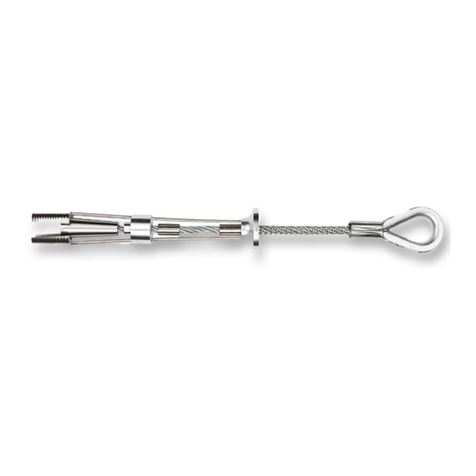
ClimbTech
ClimbTech FBAM47N instruction manual
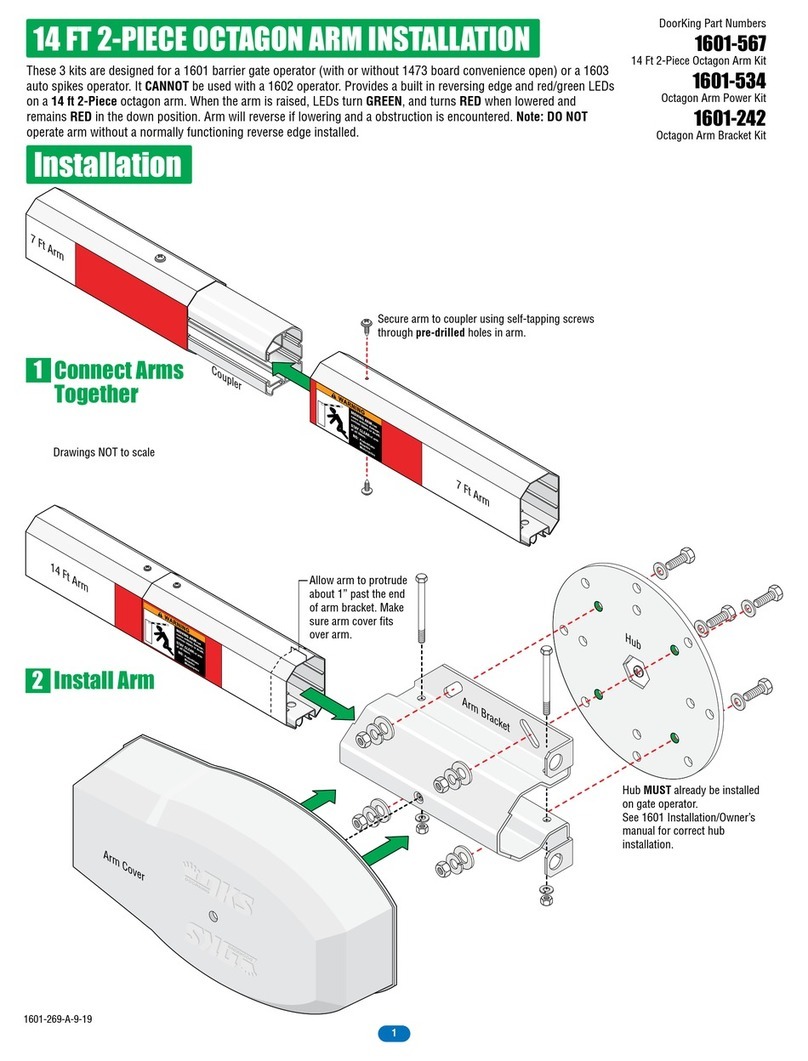
DoorKing
DoorKing 1601-567 installation instructions
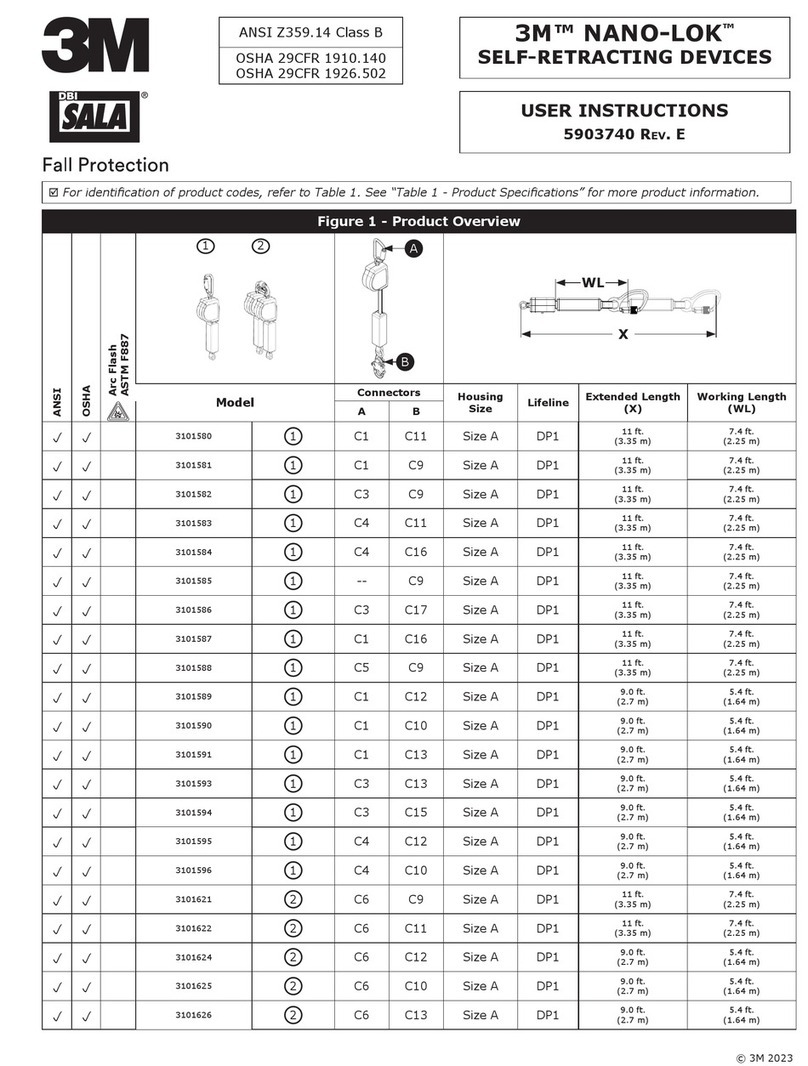
3M
3M DBI SALA NANO-LOK 3101580 User instructions

SKYLOTEC
SKYLOTEC PEANUT Series Instructions for use
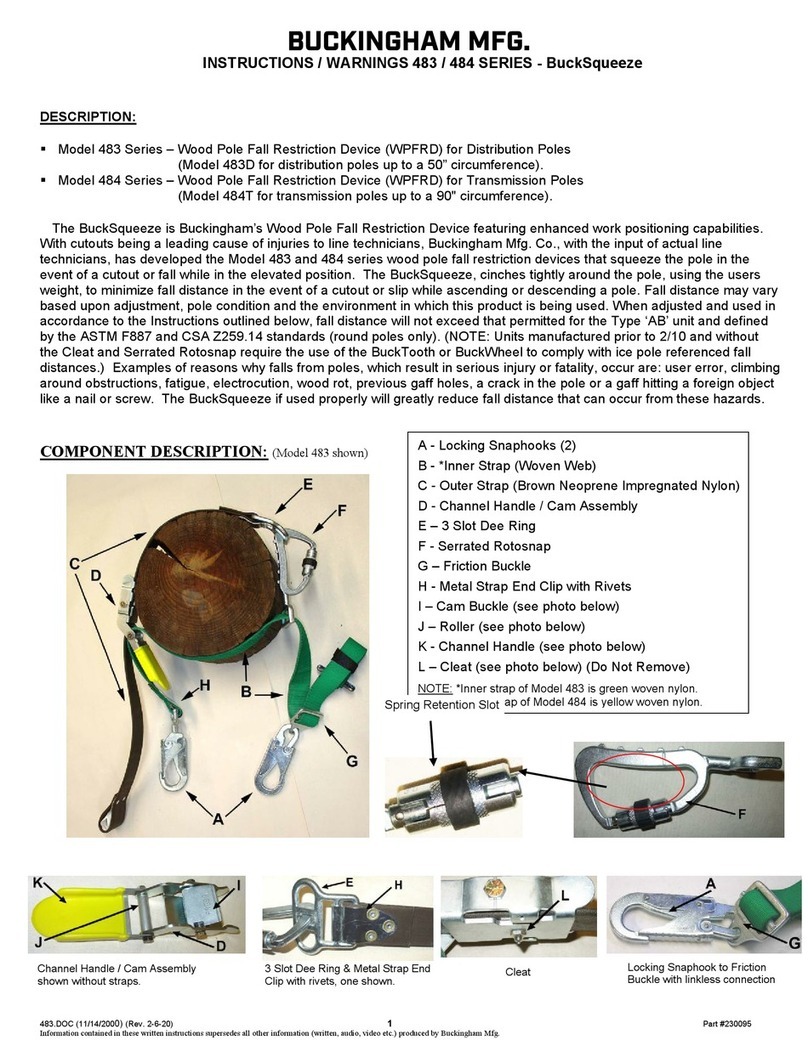
BUCKINGHAM MFG
BUCKINGHAM MFG BuckSqueeze 483 Series Instructions & warnings

MSA
MSA Latchways PushLock Eyebolt User instructions

